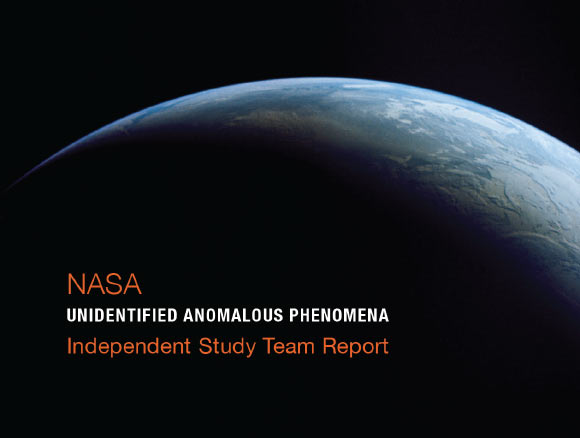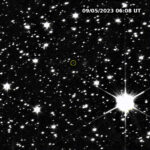On September 14, 2023, the NASA Unidentified Anomalous Phenomena independent study team published its final report containing a series of recommendations for how the agency could help to move our understanding of unidentified aerial phenomena (UAP) forward.
The NASA UAP independent study team recommends that NASA plays a prominent role in the whole-of-government effort to understand UAP by leveraging its extensive expertise to contribute to a comprehensive, evidence-based approach that is rooted in the scientific method. The team members specifically recommend that NASA utilize its existing and planned Earth-observing assets to probe the local environmental conditions associated with UAP that are initially detected by other means. In so doing, NASA can directly probe whether certain environmental factors are coincident with known UAP. They further recommend that NASA explore enhancing collaborations with the U.S. commercial remote-sensing industry, which offer powerful constellations of high-resolution Earth-observing satellites. Image credit: NASA.
UAP, popularly known as UFOs, are one of our planet’s greatest mysteries.
Observations of objects in our skies that cannot be identified as balloons, aircraft, or natural known phenomena have been spotted worldwide, yet there are limited high-quality observations.
The nature of science is to explore the unknown, and data are the language scientists use to discover our Universe’s secrets.
Despite numerous accounts and visuals, the absence of consistent, detailed, and curated observations means, scientists do not presently have the body of data needed to make definitive, scientific conclusions about UAP.
In 2022, NASA commissioned the independent study to better understand how the agency can contribute to ongoing government efforts to further the study observations of UAP.
The independent study team, set up outside of NASA, used unclassified data from civilian government entities, commercial data, and data from other sources to inform their findings and recommendations in the report.
There are currently a limited number of high-quality observations of UAP, which currently make it impossible to draw firm scientific conclusions about their nature.
The team’s report contains the findings and recommendations which aim to inform NASA on what possible data is available to be collected and how the agency can help shed light on the origin and nature of future UAP.
While NASA still is evaluating the report and assessing the independent study team’s findings and recommendations, the agency is committed to contributing to the federal government’s unified UAP effort by appointing Mark McInerney director of UAP research.
“At NASA, it’s in our DNA to explore — and to ask why things are the way they are. I want to thank the Independent Study Team for providing insight on how NASA can better study and analyze UAP in the future,” said NASA Administrator Bill Nelson.
“NASA’s new Director of UAP Research will develop and oversee the implementation of NASA’s scientific vision for UAP research, including using NASA’s expertise to work with other agencies to analyze UAP and applying artificial intelligence and machine learning to search the skies for anomalies.”
“NASA will do this work transparently for the benefit of humanity.”
The overall recommendation for NASA from the new report is that the agency can play a prominent role in the government’s effort to understand UAP by furthering the study and data collection of UAP.
The external study recommends that NASA use its open-source resources, extensive technological expertise, data analysis techniques, federal and commercial partnerships, and Earth-observing assets to curate a better and robust dataset for understanding future UAP.
NASA also will advance citizen reporting by engaging with the public and commercial pilots to build a broader, more reliable UAP dataset to use to identify future UAP incidents as well as destigmatize the study of UAP.
“Using unclassified data was essential for our team’s fact-finding, open-communication collaboration, and for upholding scientific rigor to produce this report for NASA,” said David Spergel, president of the Simons Foundation and chair of the UAP independent study team.
“The team wrote the report in conjunction with NASA’s pillars of transparency, openness and scientific integrity to help the agency shed light on the nature of future UAP incidents.”
“We found that NASA can help the whole-of-government UAP effort through systematic data calibration, multiple measurements and ensuring thorough sensor metadata to create a data set that is both reliable and extensive for future UAP study.”
“Data are the critical lifeblood needed to advance scientific exploration, and we thank the independent study team members for lending NASA their expertise towards identifying what available data is possible to understand the nature and origin of future UAP,” said Nicola Fox, associate administrator of Science Mission Directorate at NASA Headquarters.
“The director of UAP Research is a pivotal addition to NASA’s team and will provide leadership, guidance and operational coordination for the agency and the federal government to use as a pipeline to help identify the seemingly unidentifiable.”




